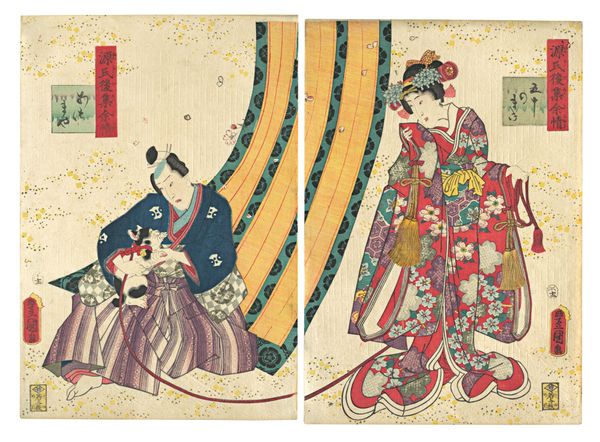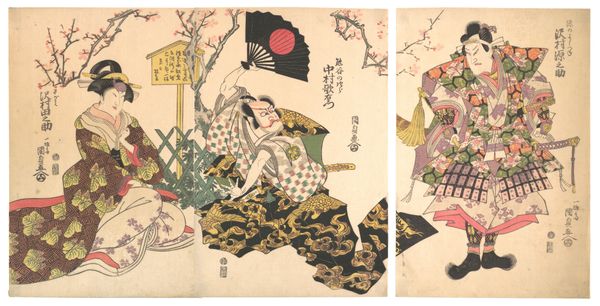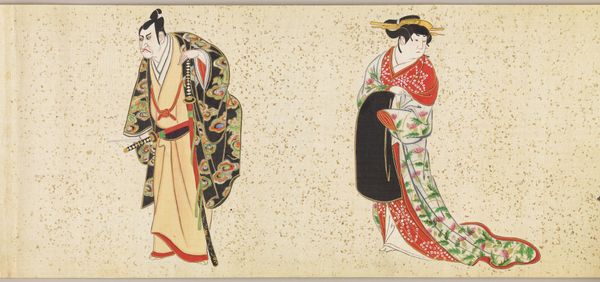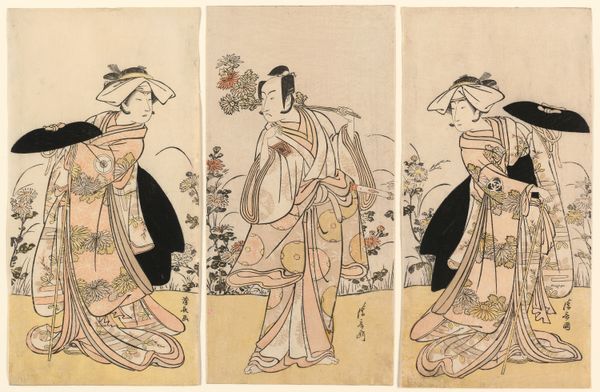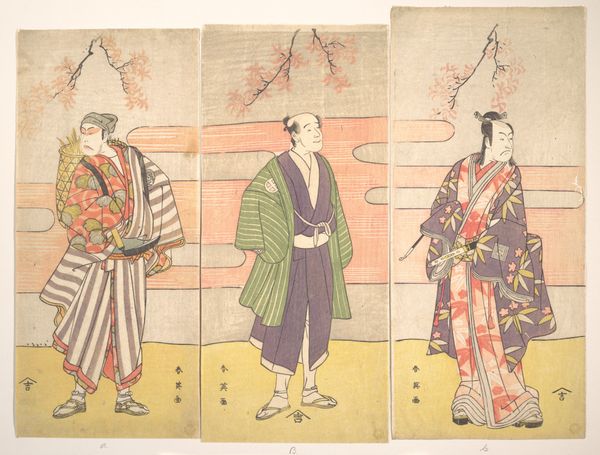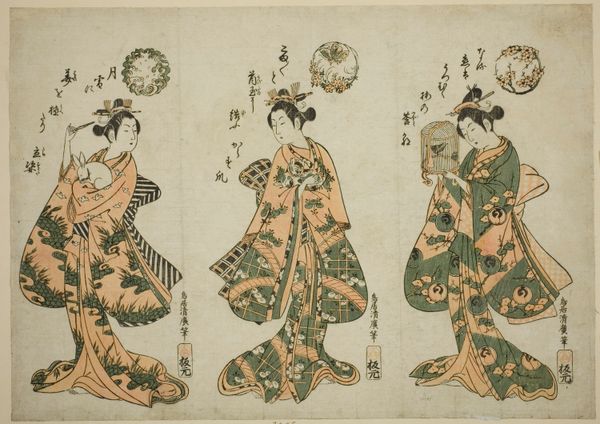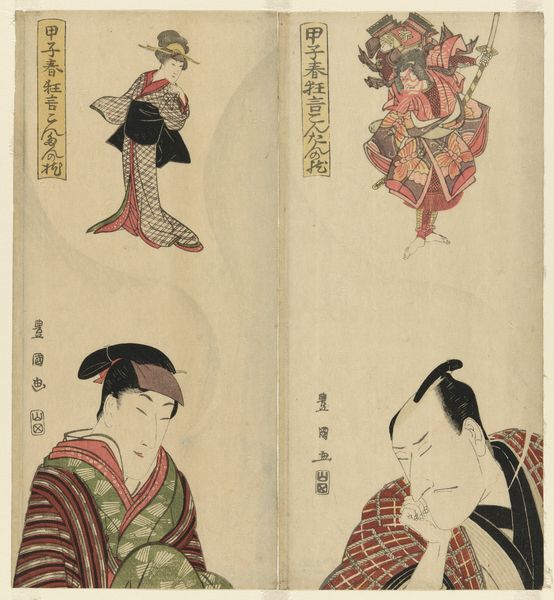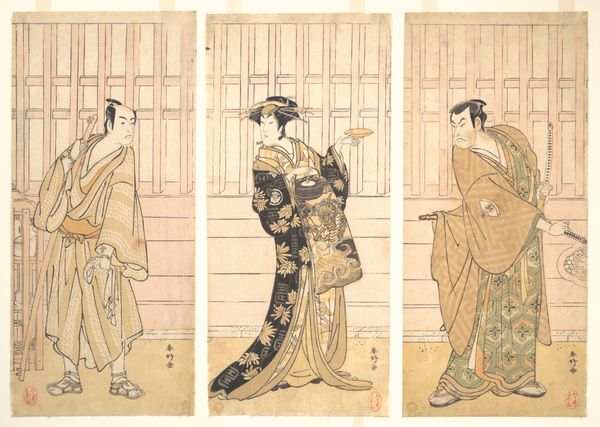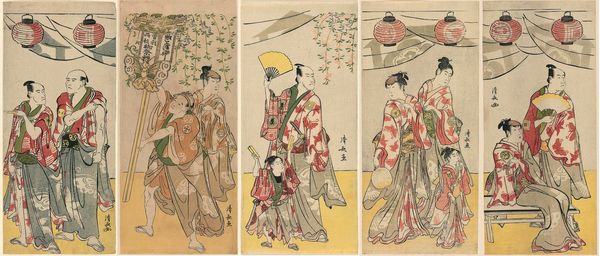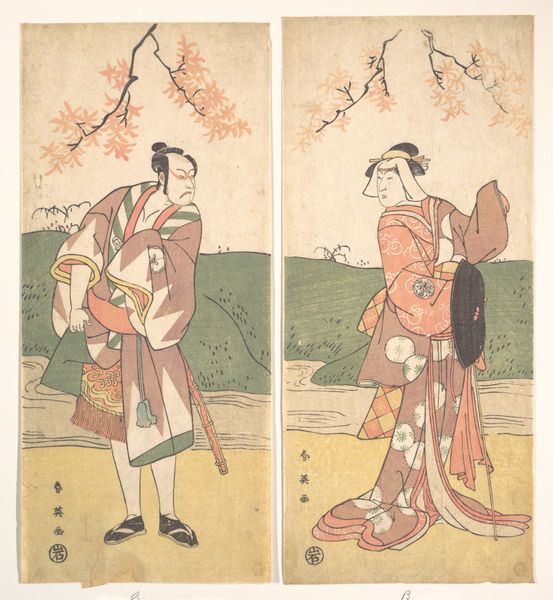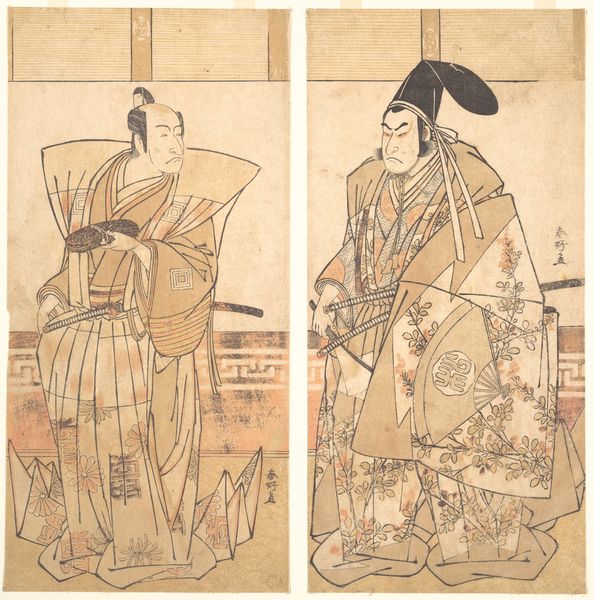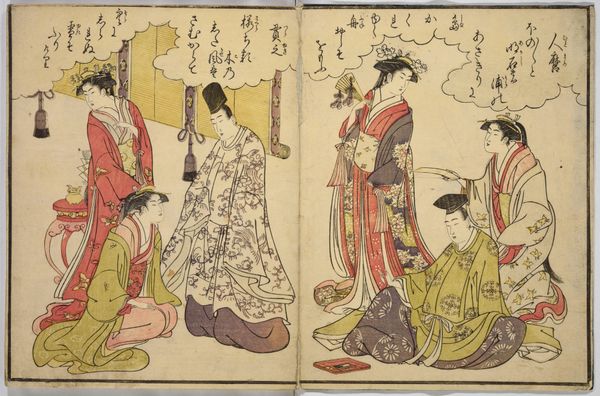![['Chapter 42, the perfumed prince', 'Lasting impressions of a late Genji collection'] by Utagawa Kunisada](/_next/image?url=https%3A%2F%2Fd2w8kbdekdi1gv.cloudfront.net%2FeyJidWNrZXQiOiAiYXJ0ZXJhLWltYWdlcy1idWNrZXQiLCAia2V5IjogImFydHdvcmtzL2VhZmQzOGQ0LWNiNTctNDU1Yi04ZDM0LWE5MWVhY2EzMGIyZS9lYWZkMzhkNC1jYjU3LTQ1NWItOGQzNC1hOTFlYWNhMzBiMmVfZnVsbC5qcGciLCAiZWRpdHMiOiB7InJlc2l6ZSI6IHsid2lkdGgiOiAxOTIwLCAiaGVpZ2h0IjogMTkyMCwgImZpdCI6ICJpbnNpZGUifX19&w=3840&q=75)
['Chapter 42, the perfumed prince', 'Lasting impressions of a late Genji collection'] 1859
0:00
0:00
utagawakunisada
Rijksmuseum
silk, print, woodblock-print
#
narrative-art
#
silk
# print
#
asian-art
#
ukiyo-e
#
pastel colours
#
figuration
#
flat colour
#
woodblock-print
#
watercolour illustration
Dimensions: height 360 mm, width 250 mm, height 260 mm, width 250 mm
Copyright: Rijks Museum: Open Domain
This diptych was created by Utagawa Kunisada in the 19th century and presents scenes from "The Tale of Genji." Note the prominent geometric patterns adorning the kimonos. These are not merely decorative but are carriers of deep cultural meaning. The star-like motifs, for instance, resonate with celestial symbolism, often associated with protection and guidance. The honeycomb pattern, seen on the other figure’s kimono, has been connected to familial bonds and good fortune. Interestingly, similar geometric patterns appear in ancient Greek pottery, albeit with different cultural connotations. There, they often symbolize order and the cosmos. This reminds us that while symbols may travel across cultures and epochs, their meanings are ever-shifting, influenced by the collective psyche of the societies that adopt them. The ephemeral nature of beauty and the enduring human quest for meaning resonate deeply within us. Such images act as mirrors, reflecting our own subconscious desires and fears. They are potent reminders of the cyclical nature of history, where symbols resurface, evolve, and take on new life.
Comments
No comments
Be the first to comment and join the conversation on the ultimate creative platform.
